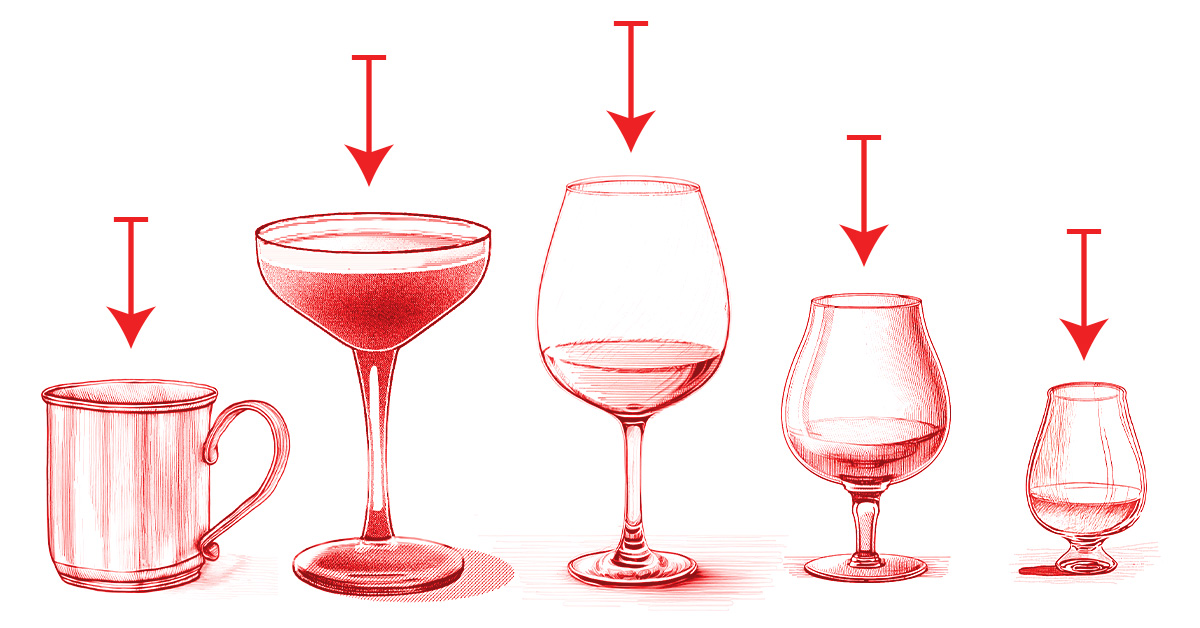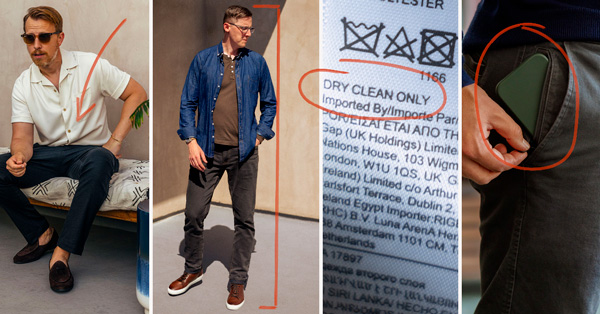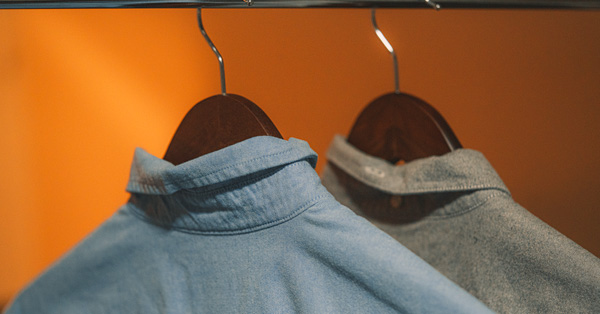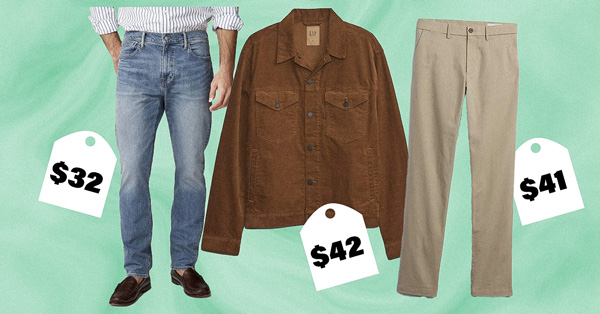Have you ever been out with a group of 5 people and when your drink orders came, the bartender delivered 5 drinks in 5 very different types of glasses?
That certainly seems like a lot of silly effort for something that can’t possibly make that much of a difference, right? Well, hold on to your barstools, folks, because you're about to embark on a journey through the surprisingly diverse world of bar glassware.
Believe it or not, they're not just for show. They have a practical purpose too.
Why does the shape and size of a glass matter so much? Well, it all comes down to enhancing the sensory experience of each drink. That could be protecting, highlighting, or discouraging attributes of a specific drink by modifying the shape of the vessel the drink comes in.
The Main Reasons a Bar Glass is Chosen for a Specific Drink:
- Based on how much liquid the drink is
- Whether it is served with or without ice
- Whether it contains carbonation (narrow preserves bubbles)
- To protect (narrow) or bloom (wide) subtle or deep aromas
- If preparation requires a wide glass to avoid spillage during straining
- Cultural tradition
There’s another important element at the root of many of the different glasses: history. Even beyond the practical benefits many of these glass types provide, there is also a heritage and tradition being preserved and continued, and that isn’t something that should be undervalued. As a species, humans have celebrated, commiserated, and became acquainted over wine, beer, and spirits for millennia.
And that, my friends, is just the tip of the [cocktail] ice [berg]. So, pour yourself a drink and let's delve deeper into the distinct world of bar glassware.
Types of Cocktail Glasses
Perhaps it’s no surprise thanks to the sheer number of different cocktails that cocktail glasses come in the most varying shapes and sizes. The word “cocktail” was first used in a British newspaper in 1798. These were a descendant of British punches, which were first brought from India in the 1600s, where they were a common part of culture. So as you can imagine, that peculiar looking drink you just ordered actually has several hundred years of evolution behind it.
Old Fashioned Glasses
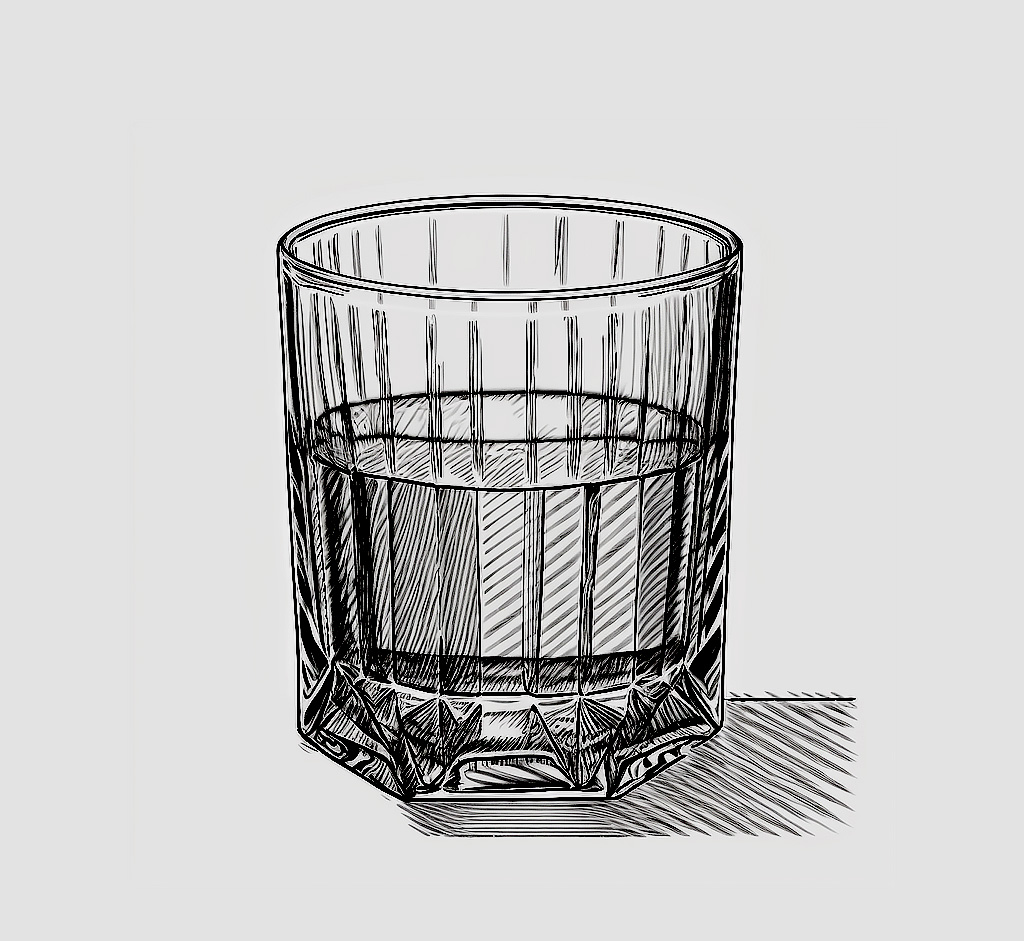
Common Cocktails: Old Fashioned, Sazerac, Negroni (rocks), modern Margaritas
Old-fashioned glasses, also known as rocks glasses, are short and sturdy with a wide rim and base. These glasses are ideal for strong, spirit forward cocktails that are lower in volume due to a lack of mixer ingredients. They will also be used to serve spirits like whiskey without ice, again due to their smaller size. The wide base of the glass allows for the addition of large ice cubes, which melt slowly and keep the drink cool without diluting it too quickly.
Coupe Glasses
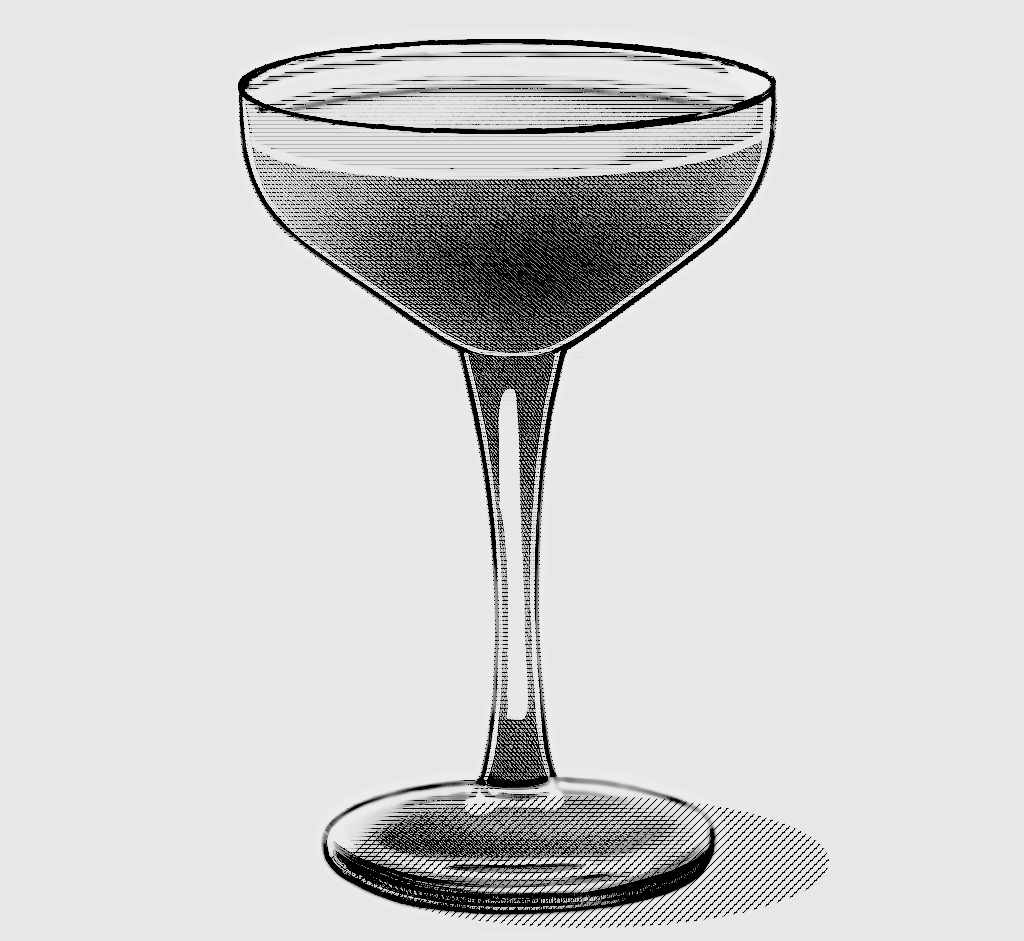
Common Cocktails: Gin Gimlet, Sidecar, Old Pal, The White Lady, Clover Club
The broad, round shape of the glass is perfect for cocktails that need straining and serving “up”. The wide shape makes straining out solids easier, and the roundness prevents contents from spilling while pouring but for this reason it is not used for carbonated drinks, which would cause it to lose its bubbles too quickly. This is a very common bar glass used for shaken or stirred cocktails that do not have ice in the glass; the stem, in theory, reduces warming the drink via heat transfer from the hand like a wine glass.
Collins & Highball Glasses
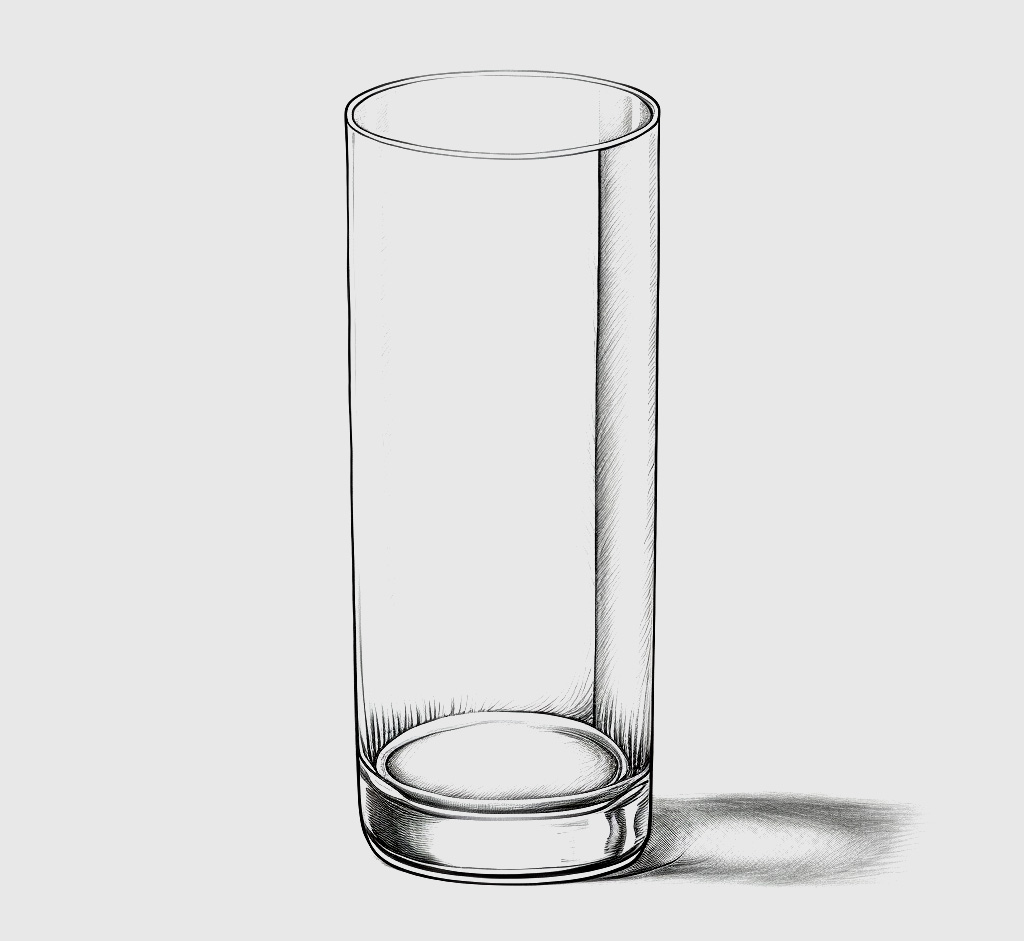
Common Cocktails: Tom Collins, Gin and Tonic, Vodka Soda, Whiskey Ginger, Rum & Coke
While Collins and Highball glasses are technically different sizes, with the Highball usually holding 8-10 ounces and the Collins holding up to 14, often the term is used interchangeably. There is a very good chance when you are served a drink that looks like this, it is probably a Highball glass. Tall and narrow, Collins and Highball glasses have a larger capacity than most cocktail glasses. Because of this, these glasses are used for “long” drinks: Those that have a generally high volume of liquid from mixers and are served over ice. The narrow shape is ideal for mixed drinks that include carbonation from soda. When you order a non-alcoholic drink from a bar, it is also likely to be served in a Highball glass.
Nick and Nora Glass
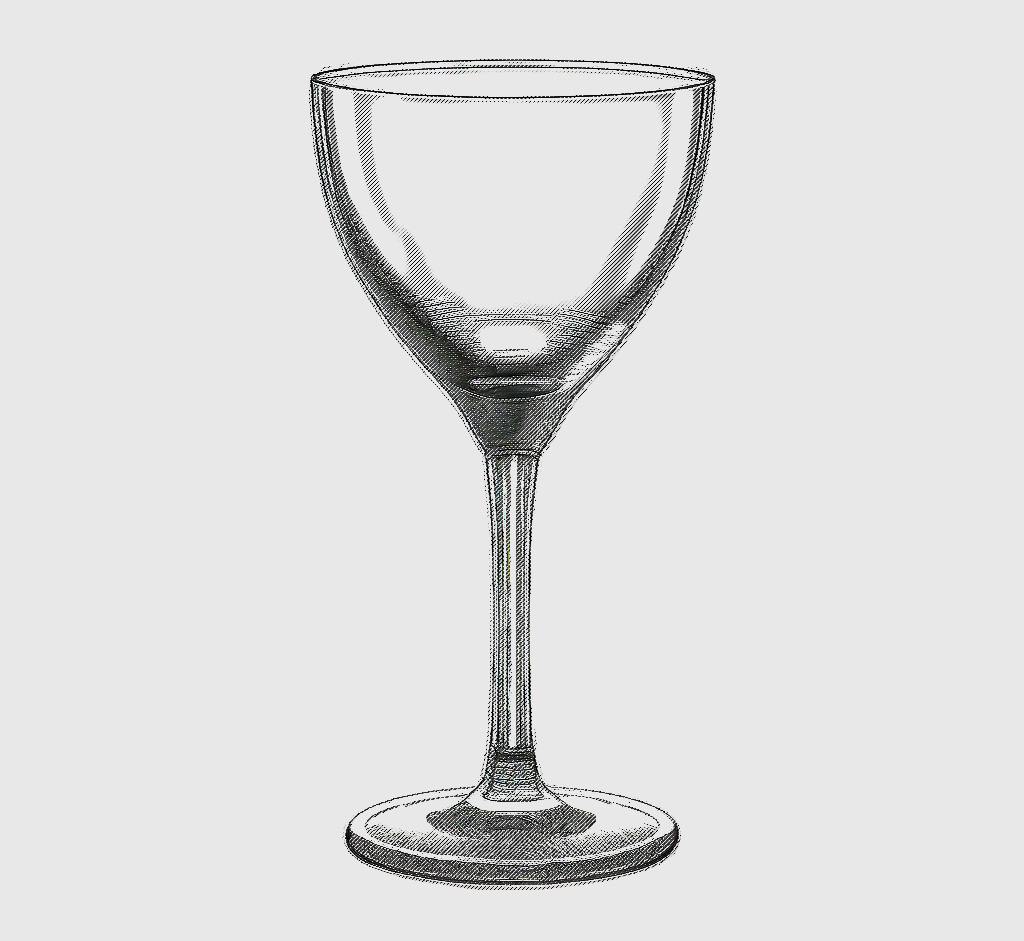
Common Cocktails: Martini, Manhattan, Negroni (served up), Bee's Knees, Jack Rose
The Nick & Nora, used for serving stirred or shaken cocktails, is a well-known type of cocktail glassware that was rebirthed by bartender Dale DeGroff for the Rainbow Room in New York in 1987. DeGroff found a design he liked, a small coupe named “Little Martini,” in a 1930s catalog and renamed it the Nick & Nora after characters in Dashiell Hammett's “The Thin Man.” It has a long stem, high-sided bowl, narrow mouth, and small capacity. They are more bell-shaped compared to a coupe glass, and are typically used for stirred drinks.
Audrey Saunders popularized the glass when she used it at Bemelmans Bar and Pegu Club, seeing it as a way to introduce customers to classic cocktails and challenge the idea that bigger was better for Martini presentation. Today, the Nick & Nora glass is used for classic cocktails like the Martini, Manhattan, Vesper, and Sidecar, and is popular among bartenders and cocktail enthusiasts.
Martini Glass
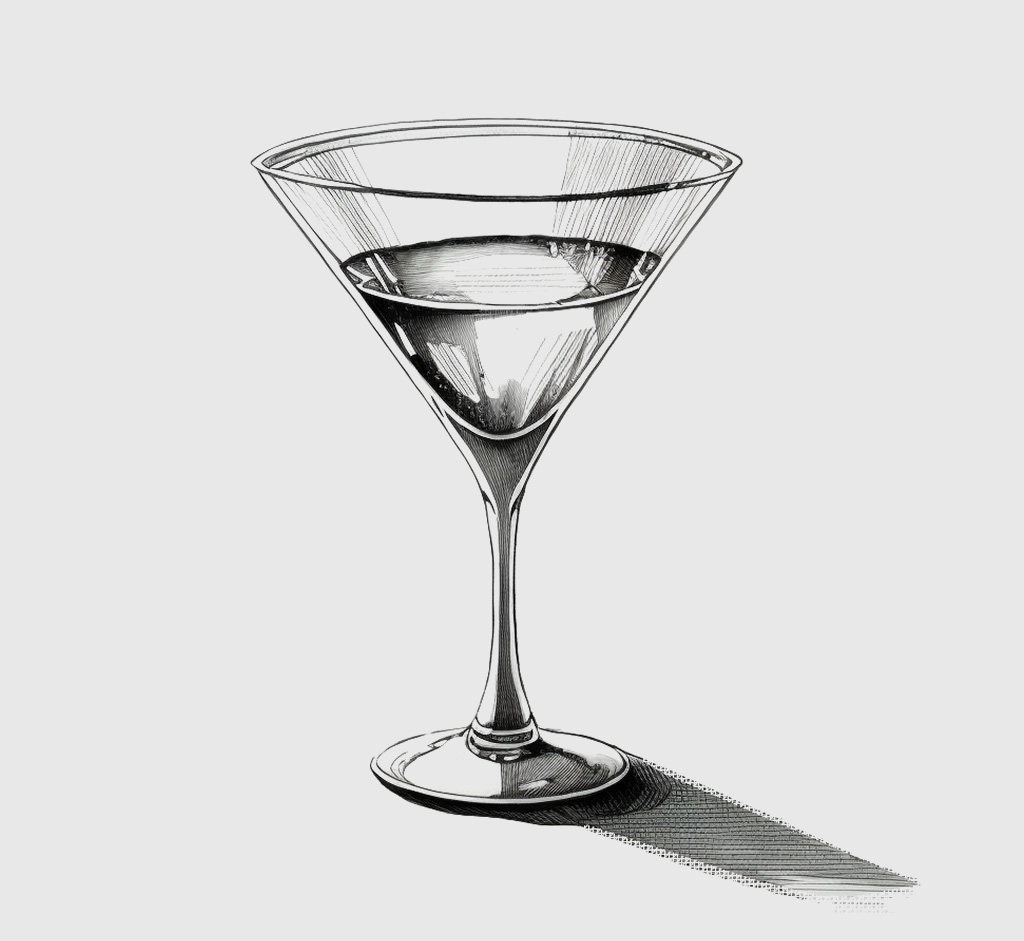
Common Cocktails: Espresso Martini, Cosmopolitan
Featuring an iconic “V”-shaped bowl design, this glassware is easily recognizable. Many contemporary cocktail bars have chosen to replace this glass shape with coupes and Nick and Nora glasses. Its shape makes it ideal for enjoying drinks with a minimum of mixers. The classic martini glass holds 6-8 ounces of liquid and is used to serve a variety of cocktails not served with ice, but is most famously associated with the Martini.
Copper Mug
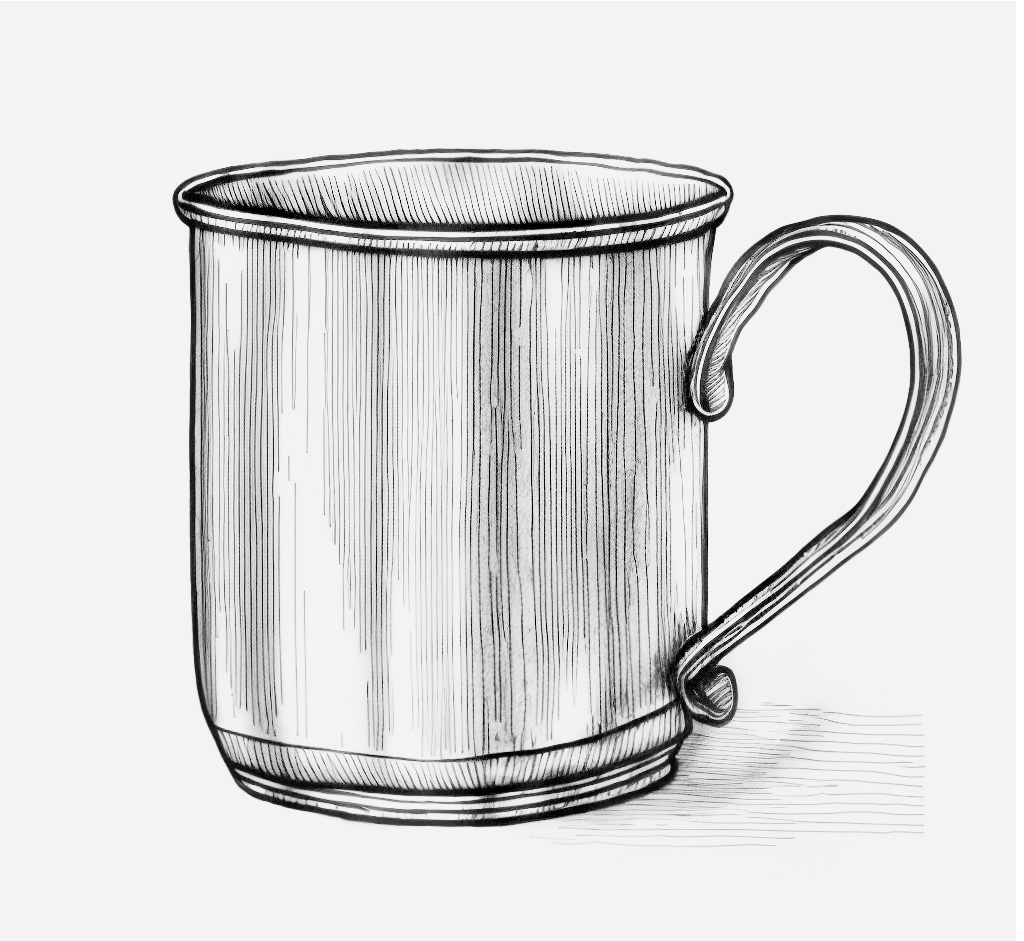
Common Cocktails: Moscow Mule
Great for keeping chilled drinks cool, copper mugs are an essential item for any fan of the popular Moscow Mule cocktail. Most copper mugs come with an interior lining of another material, such as nickel or stainless steel, to avoid the potential leaching of copper into the drink. The insulated exterior of the mug helps to keep the drinks cold, which is especially helpful when enjoying a Moscow Mule on a hot summer day.
The unique metal mug has a long tradition going back to the 1940s. Its rise to popularity is attributed to John G. Martin, a businessman who traveled the country trying to get bars to serve Smirnoff and the accompanying Moscow Mule cocktail. He would take photos of each bartender with the bottle of Smirnoff and a copper mug as proof to the next bartender of its popularity. Could a Moscow Mule be served in a Highball or Old Fashioned glass? Certainly, but with 80 years of tradition we appreciate the continued use of the iconic mug.
Julep Cup
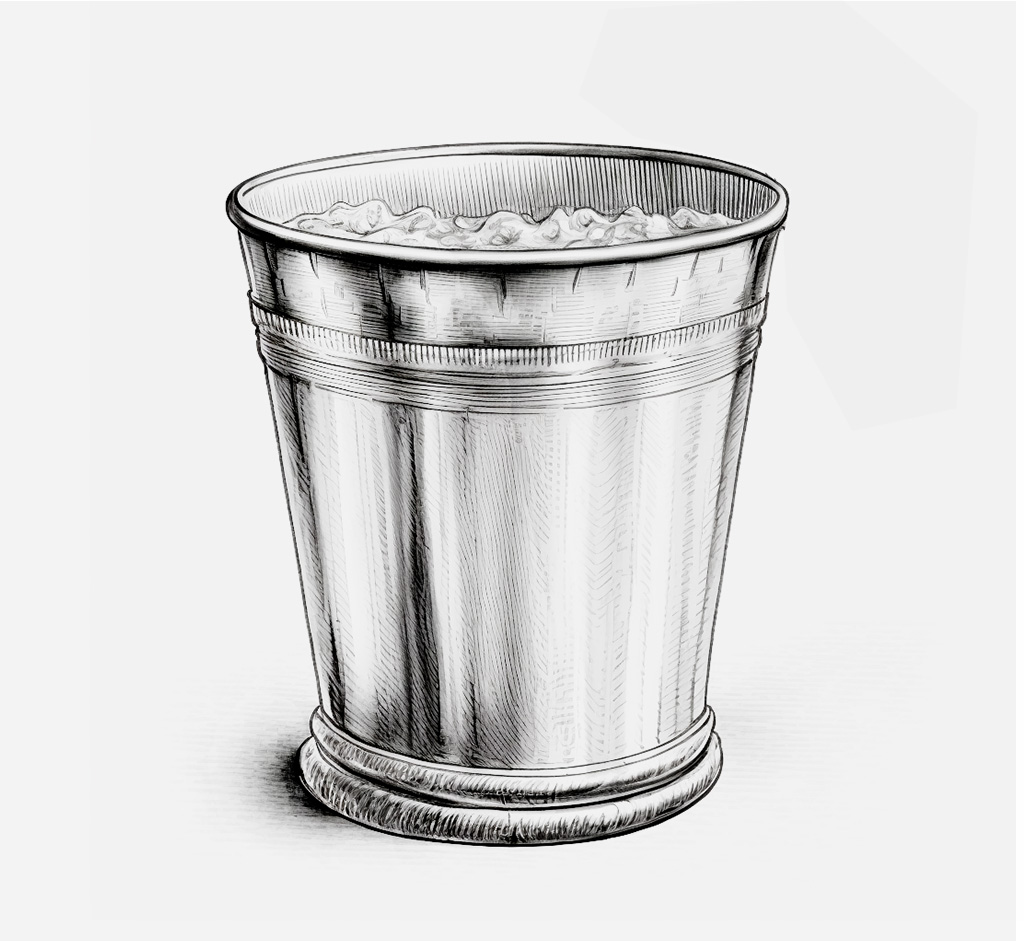
Common Cocktails: Mint Julep
The julep cup is a metal cup with a rich history and cultural significance. It is primarily used to serve the popular southern drink, the mint julep which became particularly popular in Kentucky, where it was associated with horse racing and the Kentucky Derby. The traditional julep cup was made of silver, but over time it has been produced in additional metals such as stainless steel, pewter, and others.
The julep cup's metal construction not only keeps the drink cool but also adds to the festive atmosphere of the occasion. To this day, the julep cup remains a popular symbol of southern hospitality.
Specialized Spirit Glasses
Glencairn Whisky Glass
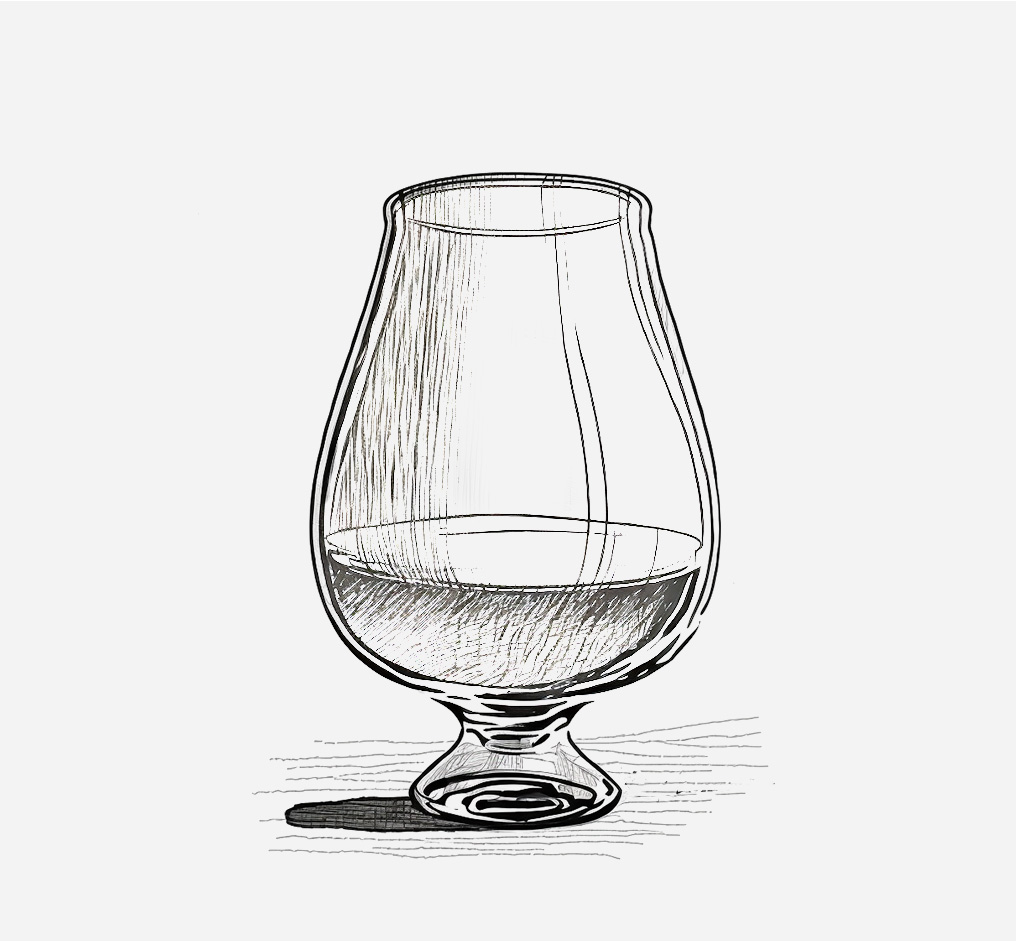
Common Drinks: Scotch
The Glencairn whisky glass is based on traditional nosing copitas used in whisky labs in Scotland and was developed by Raymond Davidson with the aid of master blenders from five of the largest whisky companies in Scotland. It won the Queen's Award for innovation in 2006 and is intended to hold approximately 50 ml of whisky. It is common to find these in establishments that focus on serving finer Scotches for tastings.
Snifter
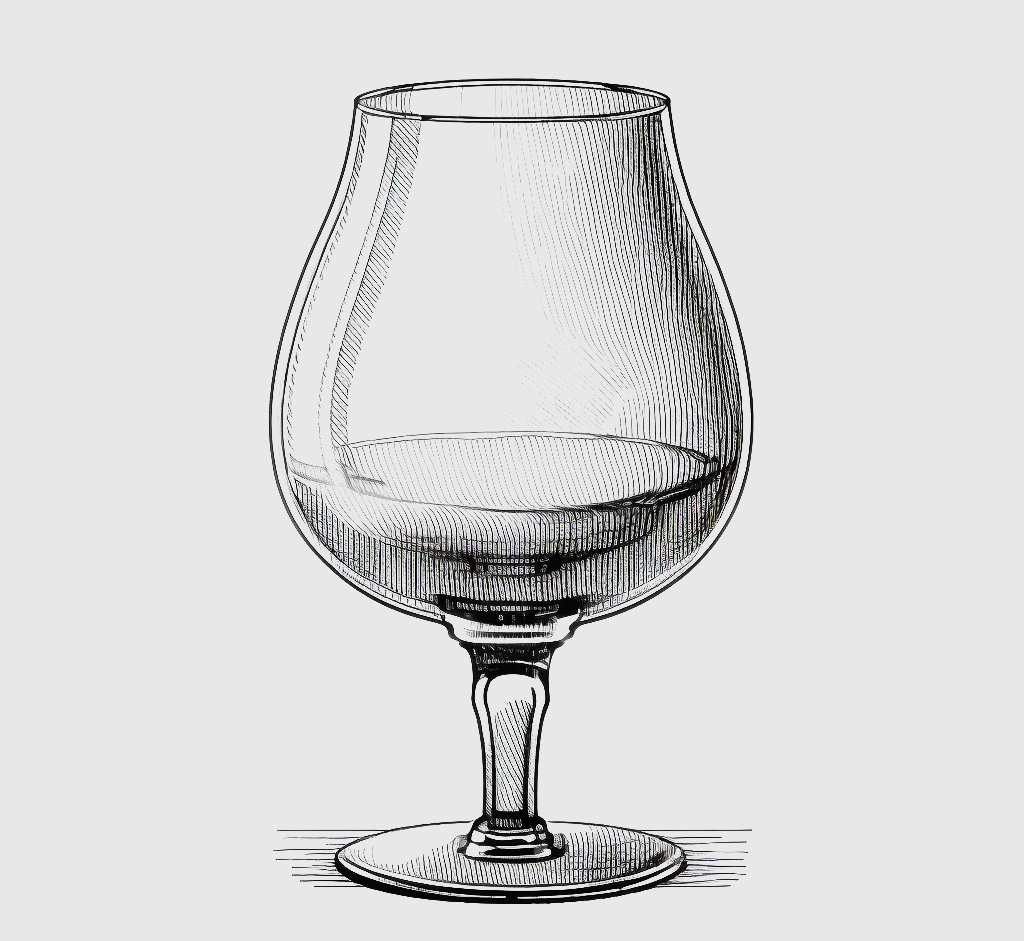
Common Drinks: Brandy & Cognac
A snifter is a unique type of glass that is specifically designed for drinking strong alcohols such as dark liquors, stouts and strong ales. The term “snifter” dates back to 1844 and refers to the act of sniffing the drink but it wasn’t until 1937 that this glass shape took on the name. The act of sniffing the drink is an important aspect of enjoying the full flavor of strong alcohols.
The glass is characterized by a short stem and a rounded base that tapers up to a narrow top. The large bowl and narrow top of the snifter glass allows the aroma of the drink to gather, which in turn enhances the drinking experience.
Types of Wine Glasses
Claus Riedel, an Austrian glassmaker, was the first to investigate the link between the size and shape of a wine glass and its effect on the taste of the wine. He found that the more empty space in the glass, the better it can contain the flavor of the wine.
The right type of wine glass can improve the taste and experience of different wine types. Its size and shape can affect the aroma and flavor, particularly with the tannins present in red wines, as it influences the dispersal of aromatic vapors. Stemmed glasses are easier to swirl and help keep the wine from getting warm while stemless glasses are more casual.
Red Wine Glasses
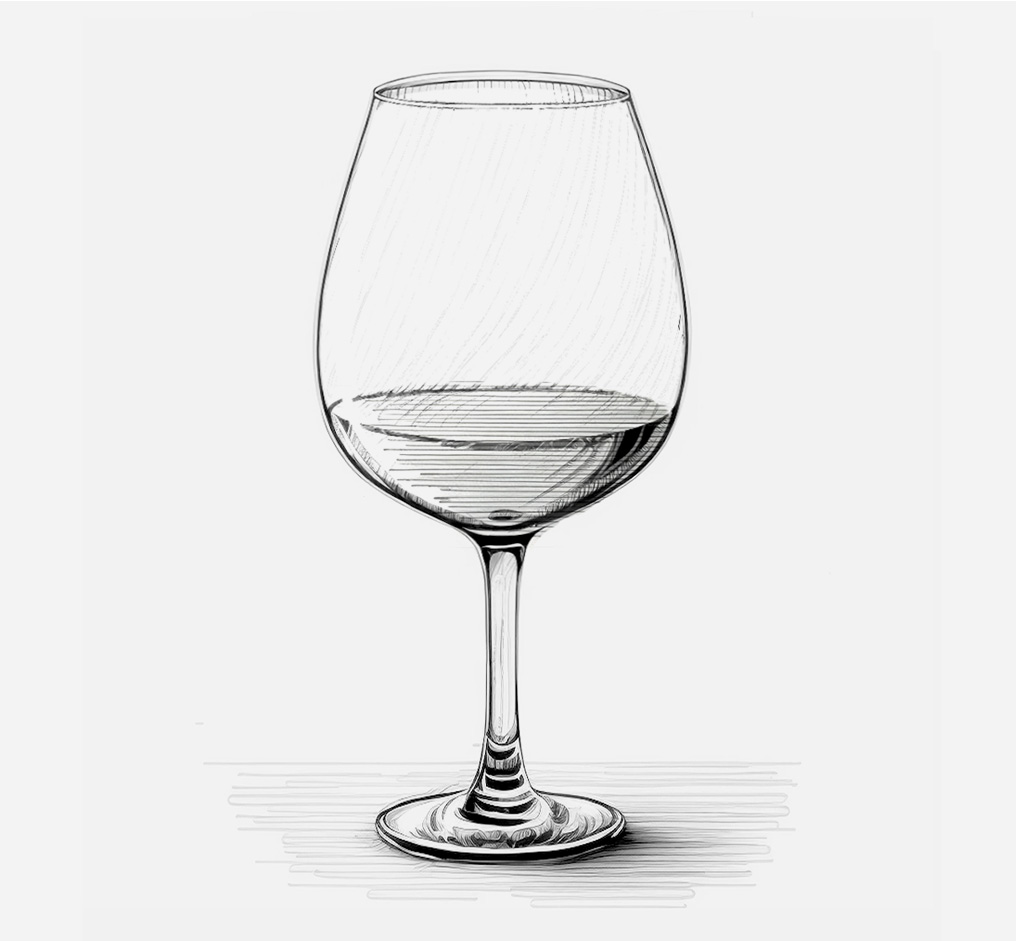
The wider bowl of a red wine glass allows more air to circulate with the wine, which can help to bring out the flavor and aroma. Red wine glasses often have a larger rim diameter than white wine glasses, to better showcase the wine's aroma and flavor.
For purists, there are different types of red wine glasses, including Bordeaux, Burgundy, Pinot Noir, and Syrah glasses, each designed for a specific type of red wine, however most people will only own a single style for their red wines.
White Wine Glasses
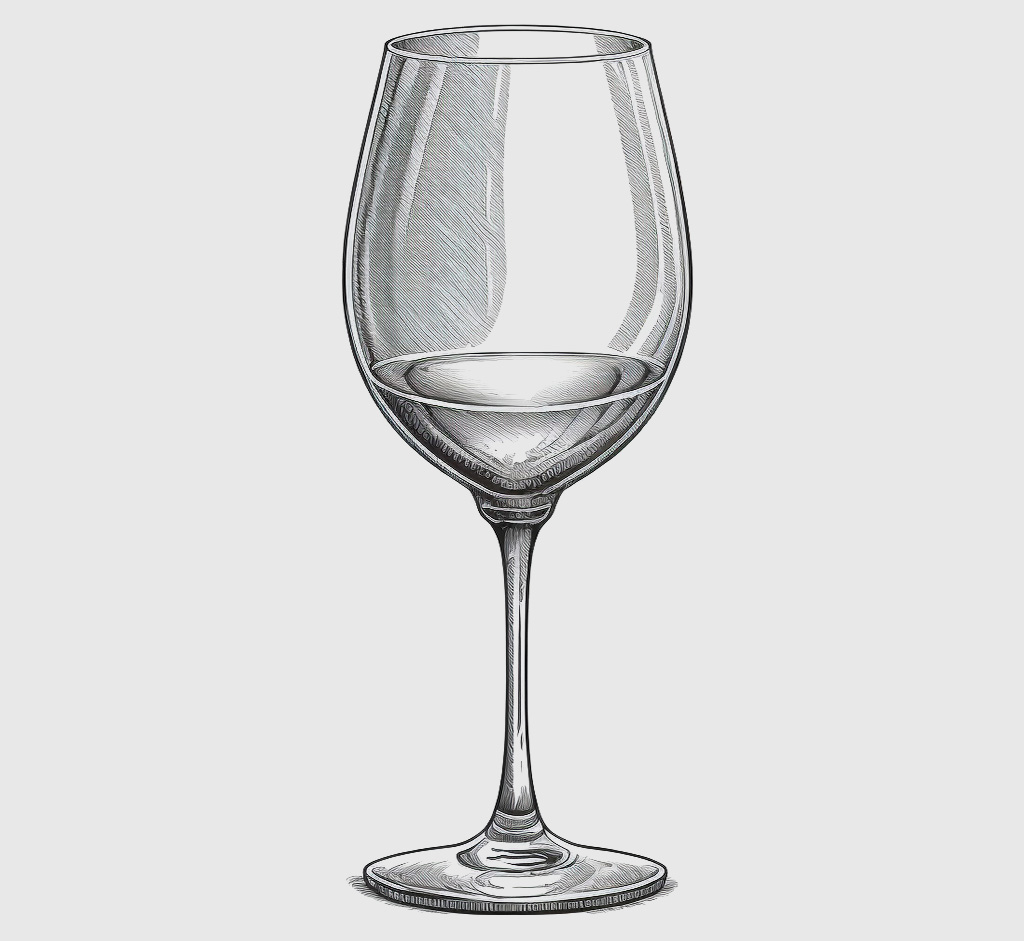
White wines have more delicate tastes and aromas, and thus white wine glasses are slimmer and have a smaller rim to maintain a cooler temperature and better express the acidity. The cylindrical shape of a white wine glass helps to keep the wine cool by limiting surface area exposure to the air.
Sparkling Wine Glasses
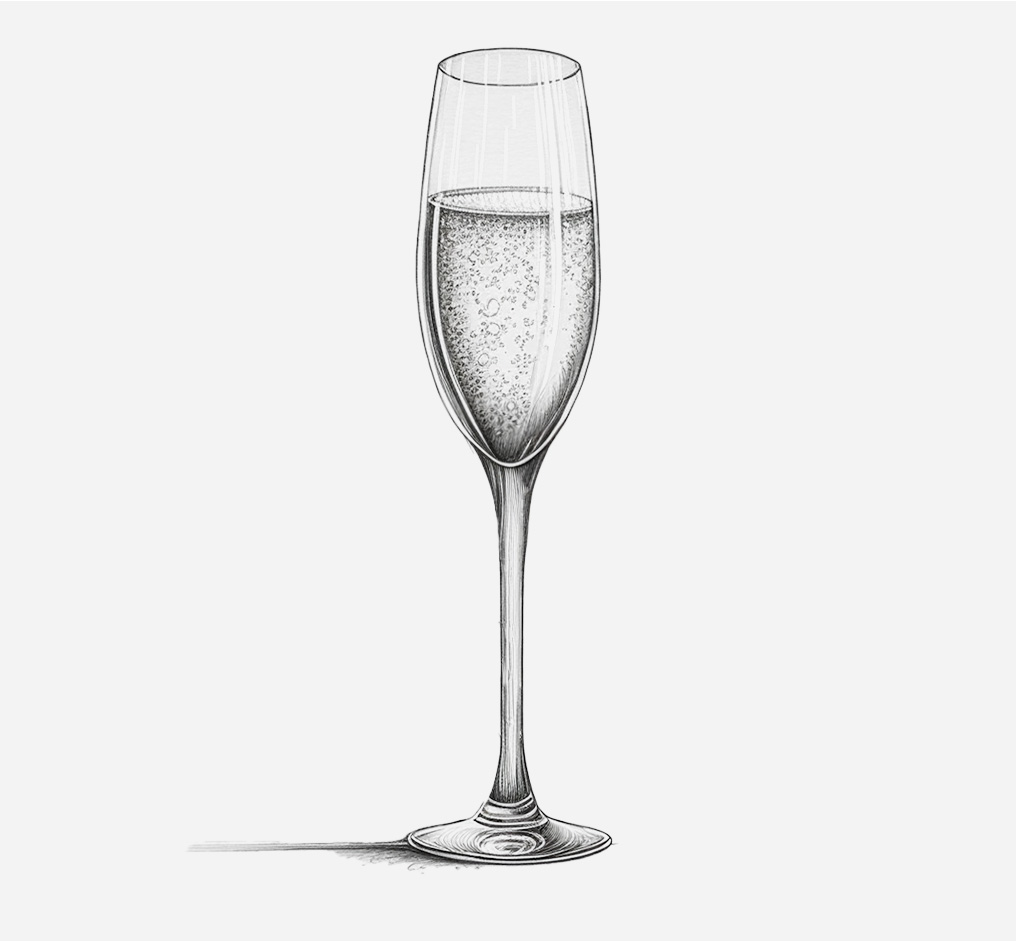
Sparkling wine glasses, also known as champagne flutes, are tall and narrow with a small bowl, a design that helps to preserve the bubbles in the wine longer by reducing the surface area where the bubbles can escape. This shape also helps enhance the visual appearance of the bubbles, which is particularly important for sparkling wines like Champagne.
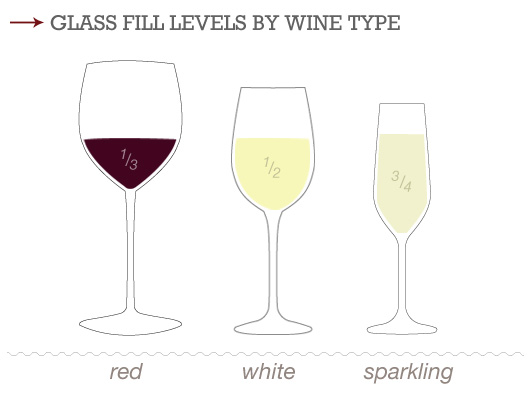
Different Types of Beer Glasses
For as many types of cocktails as there are, there are also an impressive amount of beer types. Each with unique characteristics, traditions, and history that influences what type of glass it's served in. Here are several of the most common:
American Shaker Pint Glass
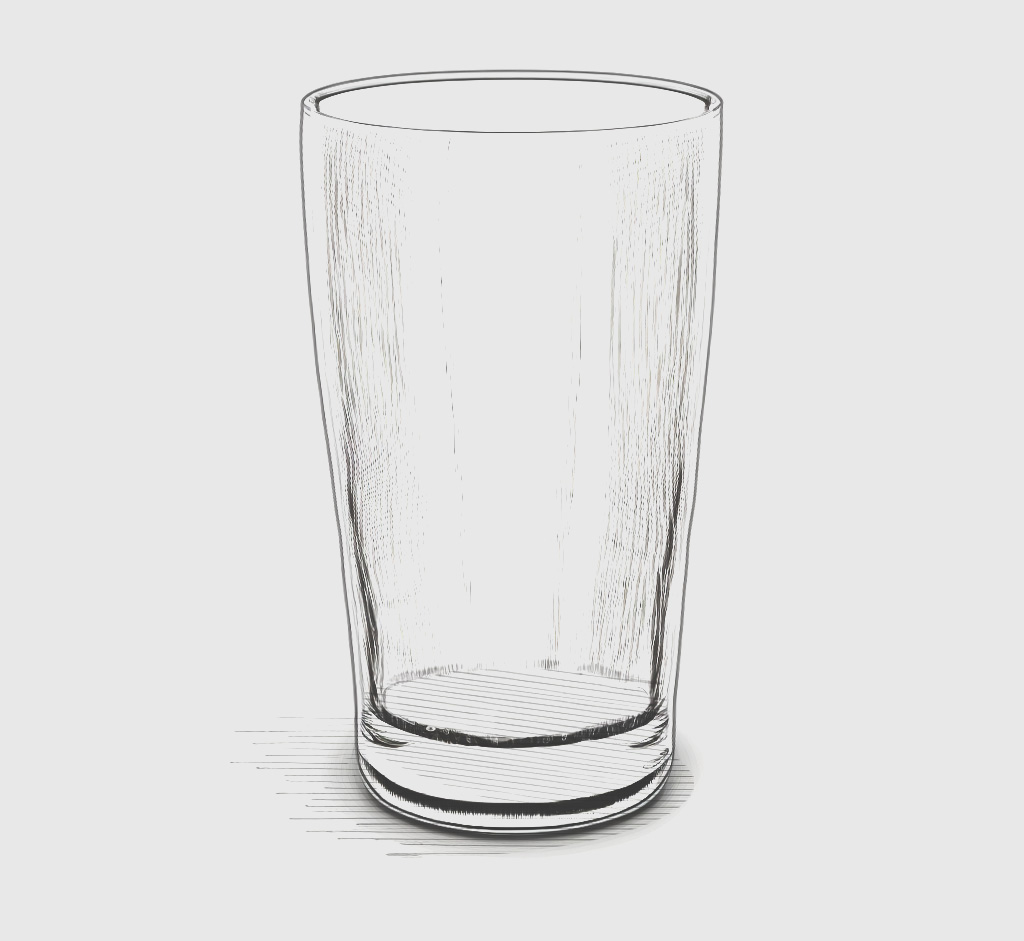
For years, the shaker glass, also known as the American pint glass, has been the go-to for serving a variety of beers in bars and homes across America. Technically the top-half to a Boston cocktail shaker, its versatility, straight-sided design with a slightly tapered top, and 16-ounce capacity make it perfect for both draft and bottled beers. Originally designed for mixing drinks in the early 20th century, it eventually became the standard glass for American draft beer after Prohibition. However, as the popularity of microbreweries and the knowledge of homebrewing spread in the late 1970s, the shaker glass has been phased out, and more specialized glasses are taking its place.
While the shaker glass is still a classic, bars are increasingly using glasses like the snifter, tumbler, tulip, German-style mug, and Hefeweisen glass to enhance the beer-drinking experience. These glasses are specially designed to showcase different types of beer, from hoppy IPAs to rich stouts.
Nonic Pint Glass
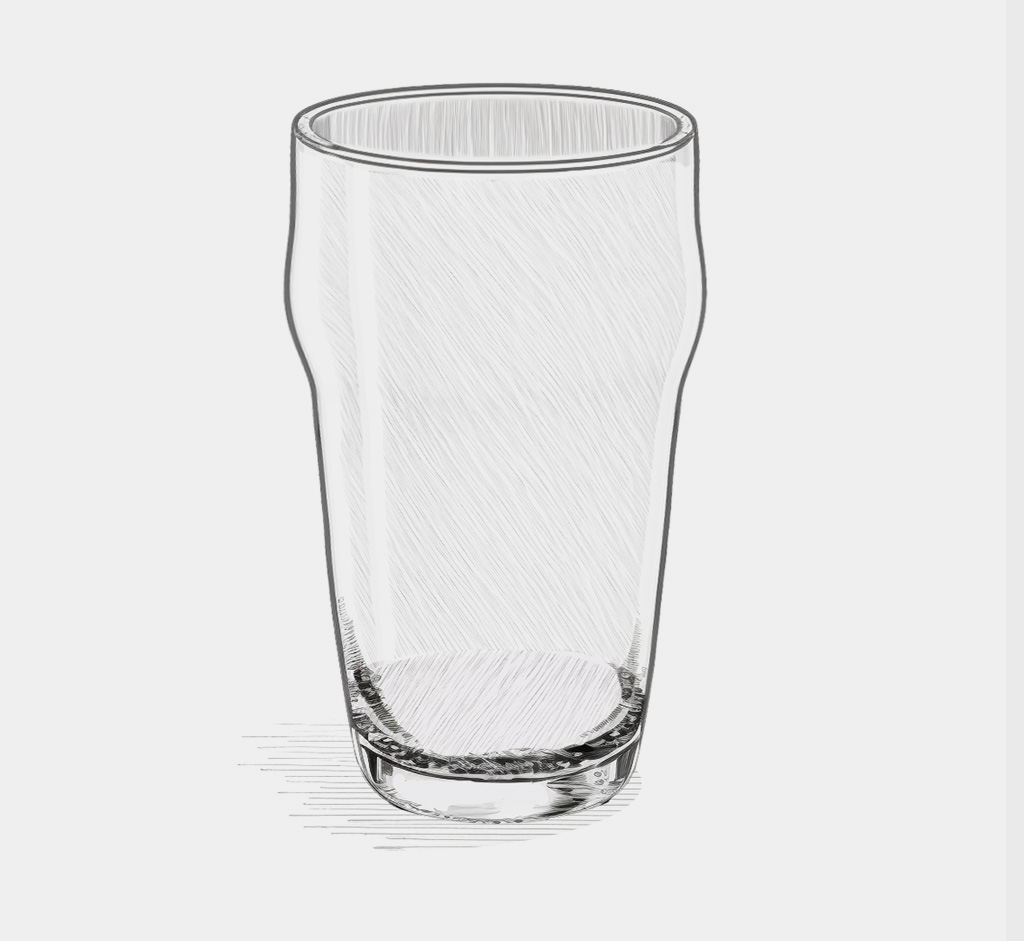
Beers Commonly Served: English ales like pale ales, bitters, dark milds
The Nonic pint glass, also known as an Imperial pint glass, is a popular choice in British pubs, known for its durability and practicality. One of the defining features of the Nonic glass is the bulge located around an inch below the lip, which sets it apart from the more streamlined shaker glass. This bulge serves several purposes: it gives the drinker a secure place to hold the glass, acting as a bumper if the glass is tipped over, and also prevents damage to the rim of the glass if it falls on its side. While the name Nonic sounds like something fancy out of Greek times, it's actually a play on “no-nick” and was a key point in Hugo Pick's patent application in 1914:
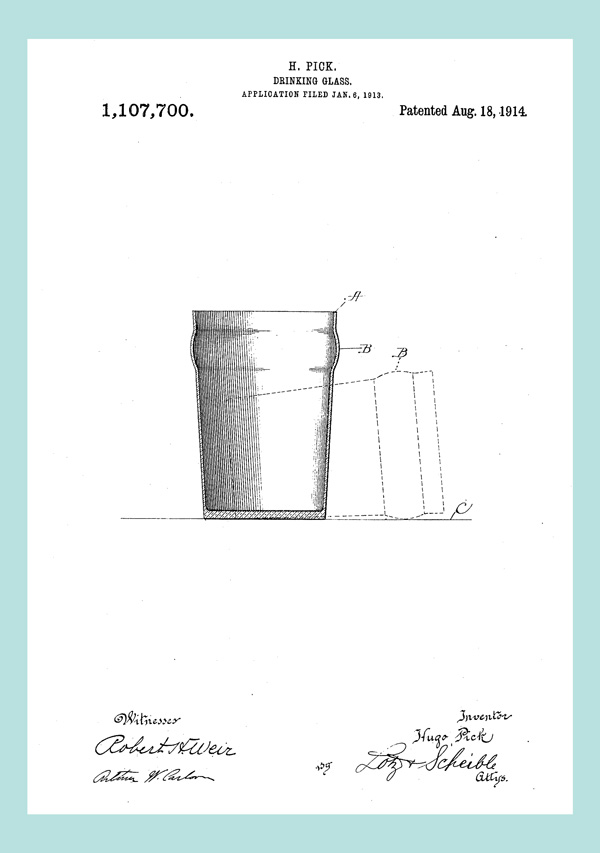
Adopted as an official measure by the British Parliament back in 1824, this glass has been a fixture in English bars since the 1960s. A true imperial pint will hold 20 ounces compared to the standard American pint of 16. The Nonic glass is suitable for most beer styles, but is traditionally used for stouts, porters, or British brown ales.
Imperial Tulip Pint Glass
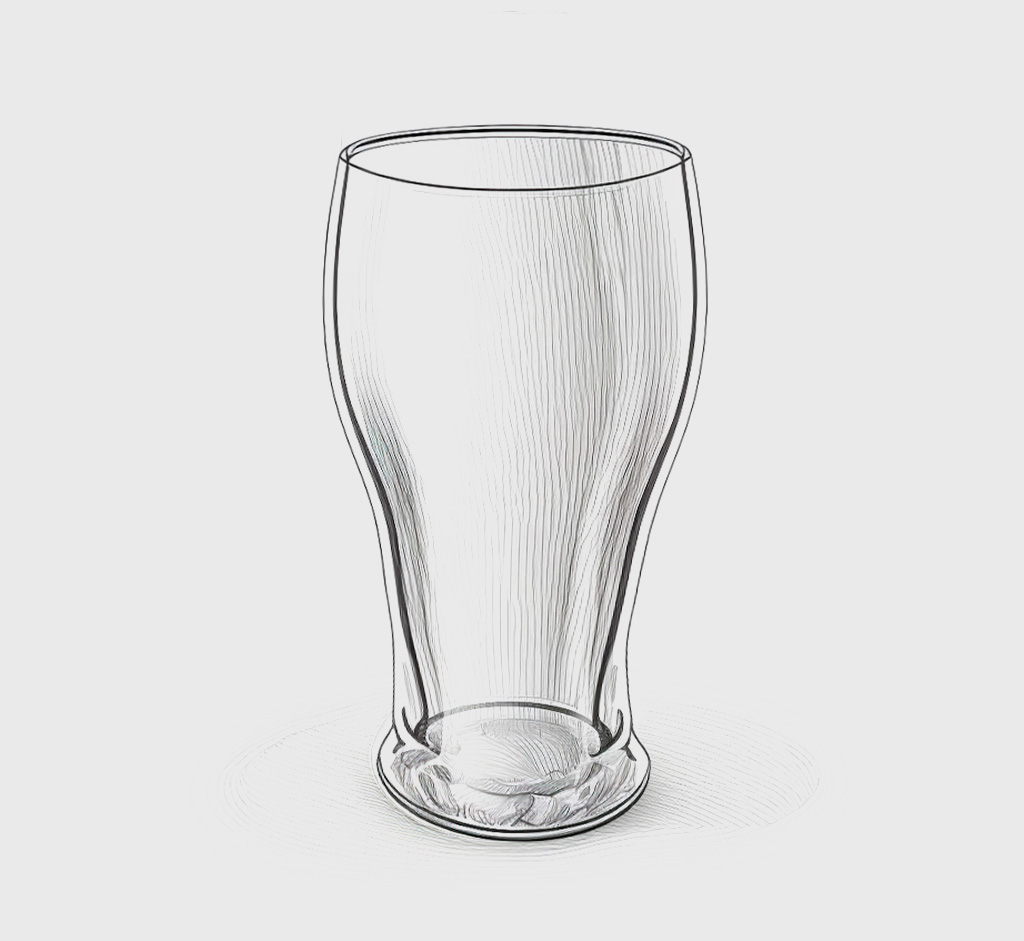
The imperial tulip pint is also commonly known as the Irish Imperial Pint or Guinness Glass. With its tulip shape and straight walls at the top, this 20-ounce glass is not only aesthetically pleasing but also has several benefits. Its smaller base and more pronounced bulb make it easier to hold for some people, while the wide mouth provides ample space for the beer to release its aroma, making it the traditional way for enjoying a Guinness Stout. Pouring slowly allows for a creamy foam to rise up, forming a thin head on top that enhances the overall drinking experience.
While the tulip pint glass is often associated with Irish stouts and ales, it's also suitable for any beer with “Nitro” in the name. Be mindful if shopping for one, there are also 16 ounce American versions available.
Pilsner Flute Glass
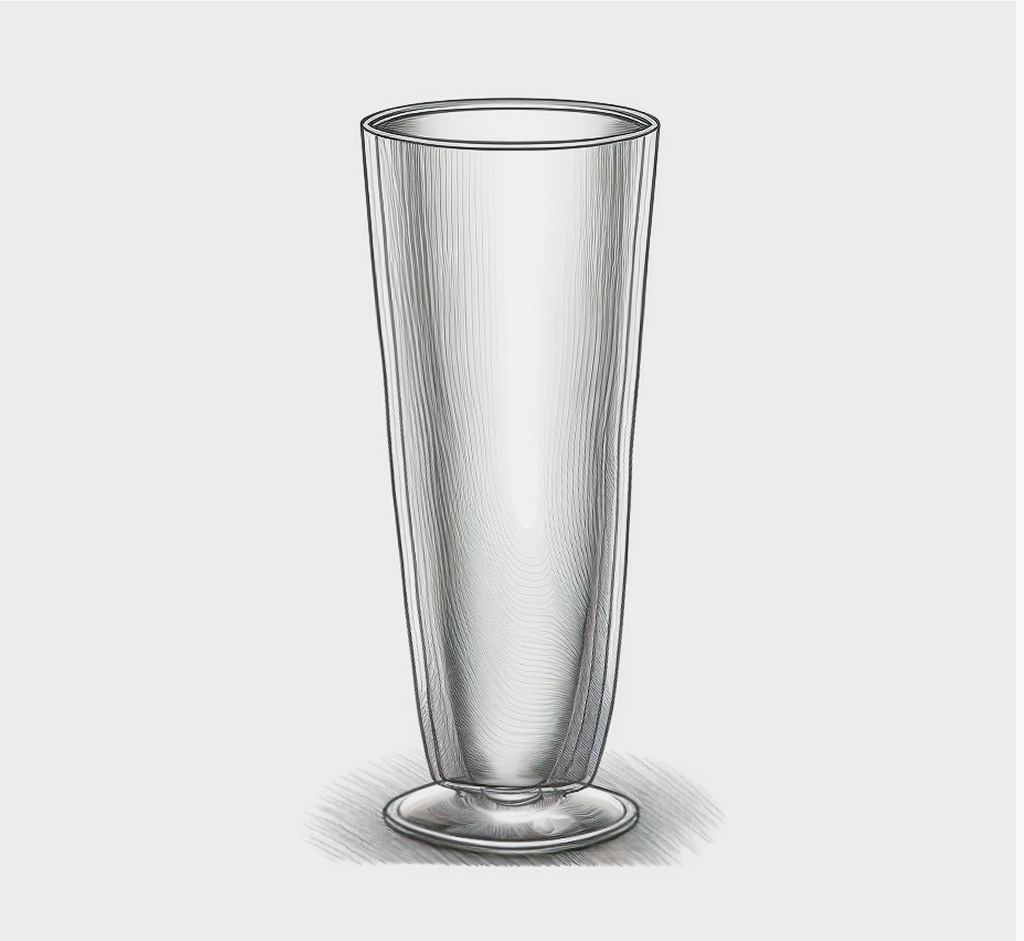
The Pilsner flute, originating from Germany, is a type of beer glass designed to enhance the drinking experience of Pilsner style beers. Its thin tapered shape is similar to that of a champagne flute, offering protection to the beer style's defining crisp effervescence. The narrow bottom and lightly flared sides of the Pilsner flute lead to a centered release of bubbles, resulting in a visually appealing movement of fine-beaded carbonation. The skinny diameter of the glass helps form and maintain a thick head, while also creating a direct path for the hop aromas to reach the nose.
The Pilsner flute is ideal for a variety of Pilsner-style beers, including German Pilsners, Bohemian Pilsners, Belgian Lagers, American Lagers, and Kölsch.
Weizen Glass
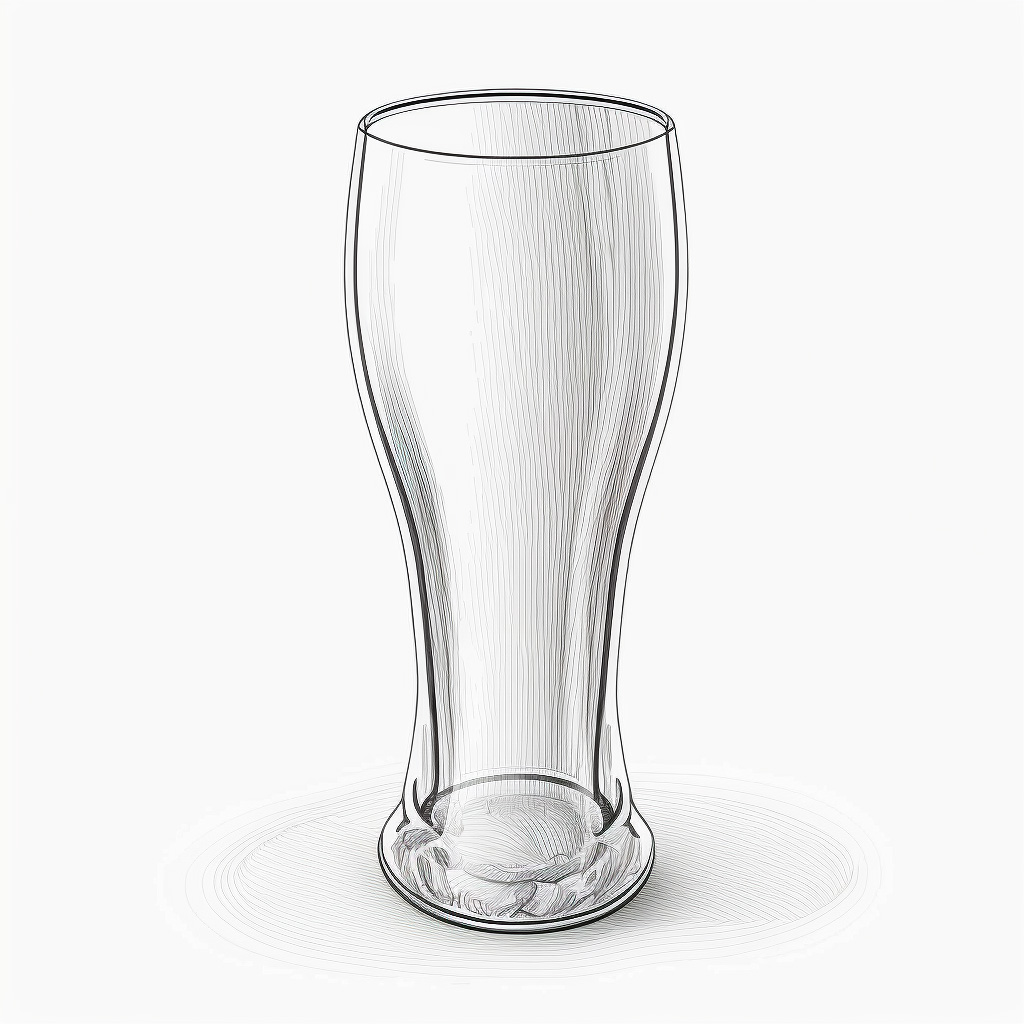
The Weizen glass is a unique type of beer glass that originated in Germany specifically for wheat beers, with weizen meaning wheat in German. This tall and curved glass has a capacity of 16 ounces, making it the perfect size for a generous serving of your favorite wheat beer. The shape of the Weizen pint glass is similar to that of an Imperial tulip pint glass, but it is taller and curvier.
This design was created specifically to showcase the color and carbonation of wheat beers, offering a visually appealing experience for the drinker. In addition, the tall and curvier shape of the Weizen pint glass provides ample space for the head to be formed.
Belgian Tulip Beer Glass
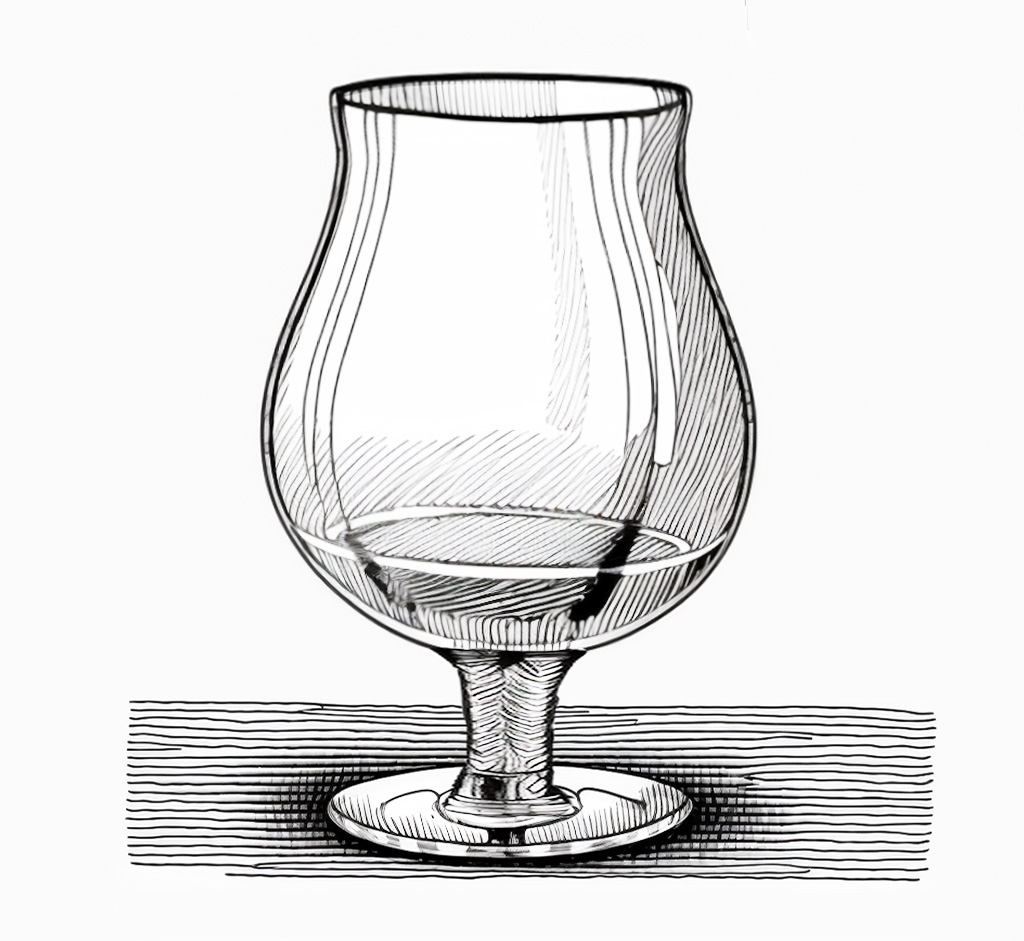
This curvy, stemmed glass is designed specifically for Belgian ales and other complex brews with a higher alcohol by volume. With its signature tulip shape, featuring a bulbous body that tapers at the top and a flared rim, this glass serves to enhance the aromas and flavors of your beer. The tulip shape helps to capture the beer's scent, creating a creamy head of foam that delivers a burst of flavor with each sip.



